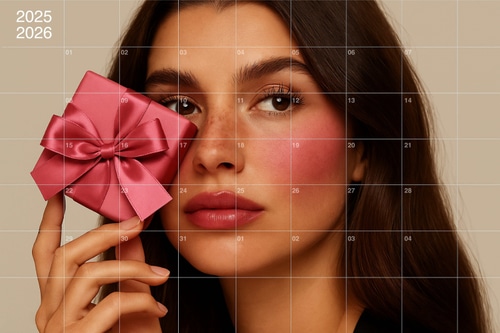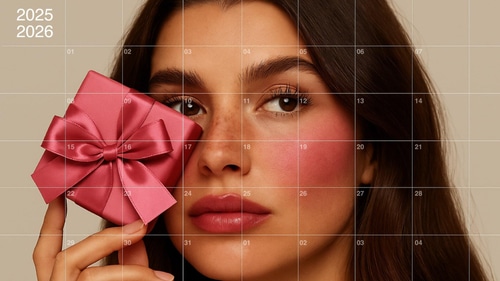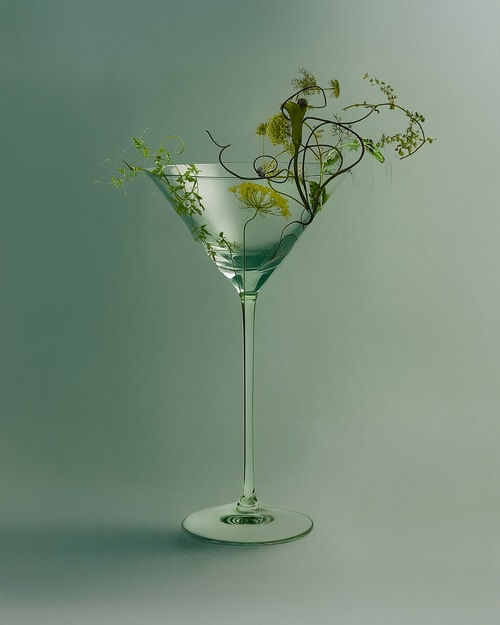

Why Brands Should Cook Up a New Luxury Calendar
Luxury brands often plan their campaigns around the same cultural high points: Christmastime, Valentine’s Day, Fashion Weeks. But culture doesn’t pause between these peaks. In fact, some of the most emotionally resonant moments happen 'off-season.' With consumer attention increasingly fragmented, surprise and emotional relevance can cut through the noise in ways traditional calendars cannot.
At Al Dente, we believe in looking beyond the obvious — and cooking up surprising cultural relevance. By activating lesser-leveraged holidays and putting fresh twists on more-typical occasions — from Pride Month to Diwali to, yes, even Valentine’s Day – brands can create campaigns that are more timely, more local, and more lasting.
THE OPPORTUNITY
In an increasingly global world for luxury, traditional campaign cadences are losing their impact. Every year, there are higher and higher stakes to deliver in quarter four, when analysts estimate that about half of prestige perfumes at groups like Puig are currently sold – yet there is so much opportunity to be leveraged too across the other 75% of the year.
Diasporas are shaping new cultural centers, and corresponding holidays, like wealth, like culture, today have no borders, and instead hold relevance across major markets. While audiences today also can tune out more repetitive or expected holiday activations, underleveraged holidays offer luxury brands the chance to show up meaningfully, and crucially, memorably.
Here we turn to looking at just a couple of the cultural moments that may be worth rethinking:
PRIDE MONTH
Pride Month is every June, and is just around the corner – but this year, like every year, this month shouldn’t be about surface-level statements. In fact, surface-level statements can create backlash for brands in an age where ‘rainbow capitalism’ and ‘pinkwashing’ (or the marketing tactic where brands adopt LGBTQ language as a way to gain positive public PR, despite having goals not genuinely linked with support for LGBTQ people).
According to Merril Lynch analysis from 2023, American LGBTQ shoppers have an estimated $1.4 trillion in annual purchasing power – to put that in perspective, nearly seven times the GDP of Greece. This customer base is growing also, with double the adults identifying at LGBTQ this year than in 2017 – most particularly among Gen Z, where a quarter of adults identify as LGBTQ. However, in spite of this, nearly two-fifths of corporations plan on scaling back Pride Month engagements this year, according to a survey of top executives from Gravity Research. Amidst ‘woke’ backlash, brands have pulled back from marketing for Pride Month, but then in some cases, like with Target, have faced consequences and boycotts for doing so.
Yet premium and luxury brands do have a real opportunity in Pride Month to create culturally invigorating marketing and work, and support key communities – the space is absolutely there to create work that’s inspiring and also authentic to your brand’s unique codes. Top examples for us include brand campaigns that spotlight queer people and love in natural ways, or activations like Aesop’s ephemeral LGBTQ+ libraries, which in the past has offered a thoughtful, literary response that’s felt rooted in real culture.
LABOR DAY
Labor Day weekend in the US is often associated with sales and escapes, and recent data underscores the opportunity that’s there for brands. According to Numerator, nearly 9 in 10 consumers shop Labor Day weekend sale events, with 25% planning to look for deals on clothing and household products.
But Labor Day weekend holds potential for something deeper: a reframing of rest itself. In a luxury context, it could become a quiet moment to speak to balance, wellness, and the value of time. Brands can use this moment to create creative content, send newsletters, and launch micro-content capsules that spark key connections just when audiences are most receptive to that kind of storytelling – whether it’s a brand already drenched in Americana like Bode, or a French giant like Chanel.
LA RENTRÉE
Similarly, in France, September isn’t just about going back to work — it’s about all-around starting fresh. La rentrée is a cultural reset, marked by renewed routines and a focus on self-improvement. Retailers often see a surge in consumer activity during this period, with shoppers seeking new products and experiences to complement their refreshed outlook.
Le Labo is one example of a brand with a calendar that aligns with this kind of rhythm by offering its full collection of City Exclusives in all boutiques in September, offering maximum opportunity to explore their brand’s potential at a refreshing time. Other brands could tap into this sensibility of creative reset and urban reentry.
DIWALI
This Festival of Light is already a moment of abundance, gifting, and beauty — but too often ignored outside of India, particularly in countries with meaningful Indian diasporas. Recent brand capsules suggest a shift, but the opportunity for global, culturally fluent storytelling is still wide open.
According to The Trade Desk, in 2023 approximately 70% of Indians spent more for Diwali in 2023 than the year before – wherever in the world you are, the holiday is increasing in relevance, and given its lush aesthetic universe, is an absolutely glowing opportunity for luxury brands to authentically engage with moving forward. Jimmy Choo recently excelled by launching a Diwali collection and campaign that felt honoured the holiday tradition, appealing to both contemporary and traditional Indian audiences, while still feeling deeply aligned with the brand’s codes.
QIXI FESTIVAL
Qixi Festival, often referred to as China’s Valentine’s Day, orbits around a mythic love story, not a made-up marketing construct. Loewe wonderfully engaged with the holiday last year with an animation campaign featuring a pair of lovestruck hedgehogs — but the deeper cultural resonances still remain largely untapped by global luxury houses.
Last year, brand-generated content for Qixi saw a 28.4% increase in engagement compared to Qixi in 2023, while brand-related user-generated content on RED (Xiaohongshu) grew by 11.6% year-on-year. In China, Western Valentine’s Day is losing relevance, whereas Qixi is gaining and offering this really beautiful chance to craft localized storytelling for a brand’s Chinese audience.
RAMADAN
The Gulf region is known for its high spend on luxury items, and retail experts estimate that 20 to 30 percent of annual sales in the region are made during the Ramadan period.
But Ramadan is not just a Gulf-region retail moment — it’s a sacred one with truly global resonance. The brands that engage best do so with sensitivity and care, and can do a much better job of including expats and diasporas in mind while crafting campaigns and activations. The opportunity here is not about products but building presence across design, hospitality, and deep respect.
AND BEYOND…
The holidays mentioned above only begin to scratch the surface of what is possible, and how a brand can think about leveraging unexpected and fresh cultural moments throughout the year. They might, for example, keep an eye on what’s happening in the literary world, or at the box office, and catch the next Barbie or Sally Rooney phenomena far ahead of their competitors (we at Al Dente certainly have our opinions on what these cultural phenomena might be for 2026!).
Whether it’s for Independence Days, country-specific holidays like Thanksgiving, or holidays that could so easily be cheesy and yet also full of rich symbolism and meaningful opportunity (like Halloween), ultimately we believe that holidays can be moments of emotional truth – love, nostalgia, pride, transition, ambition – which luxury uniquely is perfectly positioned to elevate.
Even exceptionally universal holidays like New Years can be elevated. For example, New Year’s resolutions often come with a flurry of short-lived commitments. Yet Equinox challenged this narrative with its “We Don’t Speak January” campaign, refusing new memberships on January 1st to promote long-term dedication over fleeting resolutions. The campaign led to a 504% increase in brand conversation and 2.4 billion earned media impressions. It also resulted in record traffic to their website, 52% above its benchmark for the first week of January. Lunar New Year too holds an incredible amount of potential to be subverted, and handled by brands with appropriate cultural nuance. And we’ve already shared our perspective on best-in-class end-of-year holiday marketing — which you can read here.
For us, cultural resonance doesn't require mass-market appeal. In fact, the most effective luxury campaigns are often the most precise. The lesson? Be relevant, not just present.
Wherever the cultural calendar turns next, we're here to help luxury brands stay one step ahead.
At Al Dente, we feel the best campaigns don’t just sell products. Rather, the best luxury campaigns acknowledge culture as it’s actually lived: layered, emotional, and evolving. In a world saturated with sameness, brands that speak thoughtfully to ‘off-peak’ moments will be the ones that are remembered — not just seen.


